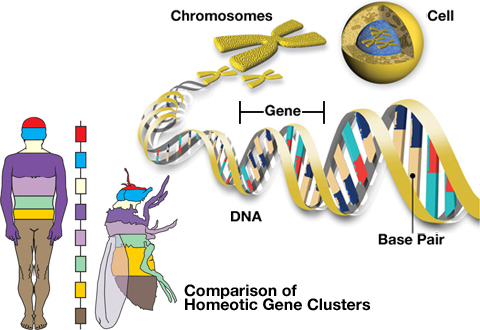5D Thinking Blog
Welcome to the 5D Thinking Blog, where we explore insightful ideas, reflections, and discussions on the 5D Thinking Model and its applications in education, science, philosophy, and faith.
We invite you to read, rate, and comment on our blog articles to share your thoughts and engage in meaningful discussions with our community. Your feedback helps us grow and refine our understanding of 5D Thinking together.
If you have a relevant blog article that aligns with the 5D Thinking Model, we would love to consider publishing it! Please submit your article for review, and if selected, we will feature it on our blog.
Start reading and join the conversation today!

I would like to reflect on key phenomenological concepts and the Husserlian phenomenological approach using a metaphor of a driving experience. I will then extend my reflection using the Nursianmana-i harfi approach. I hope this will help formulate a comparison between Husserlian phenomenology and the Nursian mana-i harfi approach. I think it is worth making such a comparison because the main pillar of both approaches is the human self. It seems to me that they both believe in the self as the key to human understanding (as a foundation of epistemology; in fact, phenomenology at its core is nothing but a new epistemology).
- 2 Comments
I would like to reflect on key phenomenological concepts and the Husserlian phenomenological approach using a metaphor of a driving experience. I will then extend my reflection using the Nursianmana-i harfi approach. I hope this will help formulate a comparison between Husserlian phenomenology and the Nursian mana-i harfi approach. I think it is worth making such a comparison because the main pillar of both approaches is the human self. It seems to me that they both believe in the self as the key to human understanding (as a foundation of epistemology; in fact, phenomenology at its core is nothing but a new epistemology).
I would like to reflect on key phenomenological concepts and the Husserlian phenomenological approach using a metaphor of a driving experience. I will then extend my reflection using the Nursianmana-i harfi approach. I hope this will help formulate a comparison between Husserlian phenomenology and the Nursian mana-i harfi approach. I think it is worth making such a comparison because the main pillar of both approaches is the human self. It seems to me that they both believe in the self as the key to human understanding (as a foundation of epistemology; in fact, phenomenology at its core is nothing but a new epistemology).
We all have heard about Newton’s Apple Incident. Yes, I’m referring to Newton’s observation of a falling apple when he was sitting in a garden. This observation stimulated Newton to ponder upon the question that why apples fall down and why don’t they fall in the upward direction. Newton’s contemplative observation of an otherwise habitualizedphenomenon eventually led him to discover the miraculous gravitational force. I mentioned this legend for a purpose. The purpose is to draw a lesson that can radically change our approach. The lesson is, if an ordinary and everyday experienced process, action or thing is approached from a different angle then the veil of it “being ordinary”; a veil formed by the customary/habitual experience, will be torn apart. Subsequently, the horizons of new realities will get exposed. Basically, Newton did exactly the same thing.
We all have heard about Newton’s Apple Incident. Yes, I’m referring to Newton’s observation of a falling apple when he was sitting in a garden. This observation stimulated Newton to ponder upon the question that why apples fall down and why don’t they fall in the upward direction. Newton’s contemplative observation of an otherwise habitualizedphenomenon eventually led him to discover the miraculous gravitational force. I mentioned this legend for a purpose. The purpose is to draw a lesson that can radically change our approach. The lesson is, if an ordinary and everyday experienced process, action or thing is approached from a different angle then the veil of it “being ordinary”; a veil formed by the customary/habitual experience, will be torn apart. Subsequently, the horizons of new realities will get exposed. Basically, Newton did exactly the same thing.
We all have heard about Newton’s Apple Incident. Yes, I’m referring to Newton’s observation of a falling apple when he was sitting in a garden. This observation stimulated Newton to ponder upon the question that why apples fall down and why don’t they fall in the upward direction. Newton’s contemplative observation of an otherwise habitualizedphenomenon eventually led him to discover the miraculous gravitational force. I mentioned this legend for a purpose. The purpose is to draw a lesson that can radically change our approach. The lesson is, if an ordinary and everyday experienced process, action or thing is approached from a different angle then the veil of it “being ordinary”; a veil formed by the customary/habitual experience, will be torn apart. Subsequently, the horizons of new realities will get exposed. Basically, Newton did exactly the same thing.
Pondering on the Importance of Oxygen during the Pandemic
Out of the many things that we take for granted in our lives is free atmospheric oxygen- a colorless, tasteless, and odorless “chemical element that constitutes 21 percent of the Earth’s atmosphere, that is capable of combining with all elements except some noble gases, that is active in physiological processes of almost all known organisms, and that is involved especially in combustion.”[i] The atomic number of an oxygen atom is 8 which means it has 8 protons in its nucleus. It is only when two atoms of oxygen combine at a certain temperature and pressure that one oxygen molecule is formed known as dioxygen, with the formula O2.
Pondering on the Importance of Oxygen during the Pandemic
Out of the many things that we take for granted in our lives is free atmospheric oxygen- a colorless, tasteless, and odorless “chemical element that constitutes 21 percent of the Earth’s atmosphere, that is capable of combining with all elements except some noble gases, that is active in physiological processes of almost all known organisms, and that is involved especially in combustion.”[i] The atomic number of an oxygen atom is 8 which means it has 8 protons in its nucleus. It is only when two atoms of oxygen combine at a certain temperature and pressure that one oxygen molecule is formed known as dioxygen, with the formula O2.
Pondering on the Importance of Oxygen during the Pandemic
Out of the many things that we take for granted in our lives is free atmospheric oxygen- a colorless, tasteless, and odorless “chemical element that constitutes 21 percent of the Earth’s atmosphere, that is capable of combining with all elements except some noble gases, that is active in physiological processes of almost all known organisms, and that is involved especially in combustion.”[i] The atomic number of an oxygen atom is 8 which means it has 8 protons in its nucleus. It is only when two atoms of oxygen combine at a certain temperature and pressure that one oxygen molecule is formed known as dioxygen, with the formula O2.
When the kid in us craves for a McDonald’s hamburger, we can walk into any restaurant with the golden arc, and get the same hamburger and fries that we are used to getting at the McDonalds’s in our hometown. And we feel right at home no matter where in the world the McDonalds’s we just entered is. Normally we would just enjoy our meal in the restaurant and return home, but this time we feel very observant and are in the mood for some philosophical thinking. Well, with some reason-based deep thinking, we can infer the following from this leisurely visit, even if we use a drive-through automated service window with nobody insight:
When the kid in us craves for a McDonald’s hamburger, we can walk into any restaurant with the golden arc, and get the same hamburger and fries that we are used to getting at the McDonalds’s in our hometown. And we feel right at home no matter where in the world the McDonalds’s we just entered is. Normally we would just enjoy our meal in the restaurant and return home, but this time we feel very observant and are in the mood for some philosophical thinking. Well, with some reason-based deep thinking, we can infer the following from this leisurely visit, even if we use a drive-through automated service window with nobody insight:
When the kid in us craves for a McDonald’s hamburger, we can walk into any restaurant with the golden arc, and get the same hamburger and fries that we are used to getting at the McDonalds’s in our hometown. And we feel right at home no matter where in the world the McDonalds’s we just entered is. Normally we would just enjoy our meal in the restaurant and return home, but this time we feel very observant and are in the mood for some philosophical thinking. Well, with some reason-based deep thinking, we can infer the following from this leisurely visit, even if we use a drive-through automated service window with nobody insight:
The claim “brain is the mind and mind is the brain” is not evidence based; it merely reflects a superficial view rooted in the materialistic ideology. It’s unconvincing to ascribe the intelligent sequence of conscious and coherent thoughts of human beings to random firings of billions of unconscious neurons. This thesis is equivalent to saying, “This is the best explanation I can offer as long as our thinking is limited by physical matter and we have nothing else in our shop.” Such inadequacies have set the stage for the centuries-old debate on the mind–body problem in philosophy.
The claim “brain is the mind and mind is the brain” is not evidence based; it merely reflects a superficial view rooted in the materialistic ideology. It’s unconvincing to ascribe the intelligent sequence of conscious and coherent thoughts of human beings to random firings of billions of unconscious neurons. This thesis is equivalent to saying, “This is the best explanation I can offer as long as our thinking is limited by physical matter and we have nothing else in our shop.” Such inadequacies have set the stage for the centuries-old debate on the mind–body problem in philosophy.
The claim “brain is the mind and mind is the brain” is not evidence based; it merely reflects a superficial view rooted in the materialistic ideology. It’s unconvincing to ascribe the intelligent sequence of conscious and coherent thoughts of human beings to random firings of billions of unconscious neurons. This thesis is equivalent to saying, “This is the best explanation I can offer as long as our thinking is limited by physical matter and we have nothing else in our shop.” Such inadequacies have set the stage for the centuries-old debate on the mind–body problem in philosophy.
Seeing a seed sprouting and a full-fledged plant rising in the air as inscribed on its DNA is no different than observing the rise of a house at a construction site as specified by the blueprints or architectural drawings, complete with plumbing, electrical wiring, painting, and landscaping, as the onsite construction materials around diminish but with no workers, engineers, cranes, and trucks visible.
Seeing a seed sprouting and a full-fledged plant rising in the air as inscribed on its DNA is no different than observing the rise of a house at a construction site as specified by the blueprints or architectural drawings, complete with plumbing, electrical wiring, painting, and landscaping, as the onsite construction materials around diminish but with no workers, engineers, cranes, and trucks visible.
Seeing a seed sprouting and a full-fledged plant rising in the air as inscribed on its DNA is no different than observing the rise of a house at a construction site as specified by the blueprints or architectural drawings, complete with plumbing, electrical wiring, painting, and landscaping, as the onsite construction materials around diminish but with no workers, engineers, cranes, and trucks visible.






